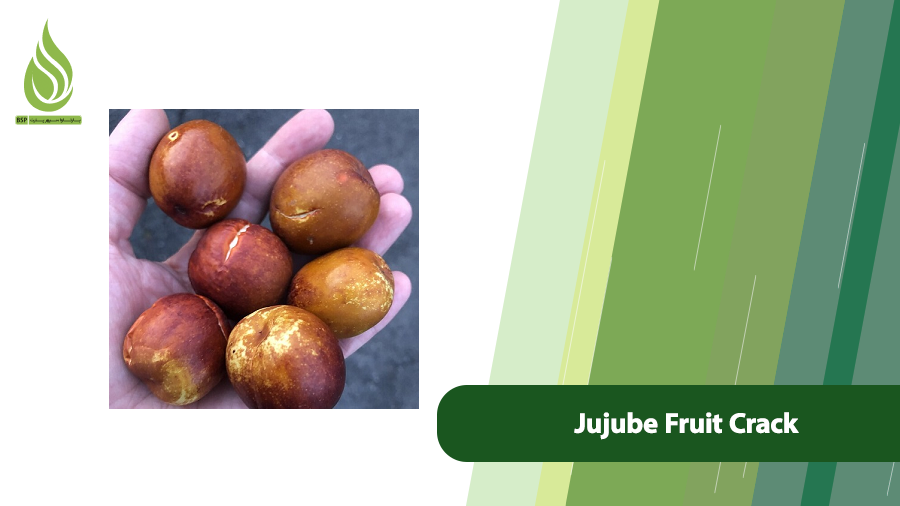
Why Do Jujube Fruits Crack and How Can We Manage This Issue?
Jujube, a delicious and popular fruit, can be enjoyed both fresh and dried. However, one common challenge faced when growing jujubes is the cracking of the fruit. This issue can significantly affect the quality and market appeal of jujubes. In this article, we will explore the main reasons behind jujube fruit crack issue and offer practical solutions to help manage and prevent this problem.
Introducing Jujube Fruit and Its Important Benefits
Jujube is a delicious and nutritious fruit that grows in tropical and subtropical regions. It has several key benefits, including promoting better sleep, reducing stress, supporting digestive health, and helping to control blood sugar levels. Jujube is also a great source of vitamin C, vitamin A, and B vitamins, all of which are important for boosting the immune system and maintaining healthy skin.
The compounds found in jujube fruit have strong antioxidant properties, which help combat free radicals and may lower the risk of chronic diseases. Because of these benefits, jujube fruit is recognized not only as a nutritious snack but also as an effective contributor to overall health and improved quality of life.
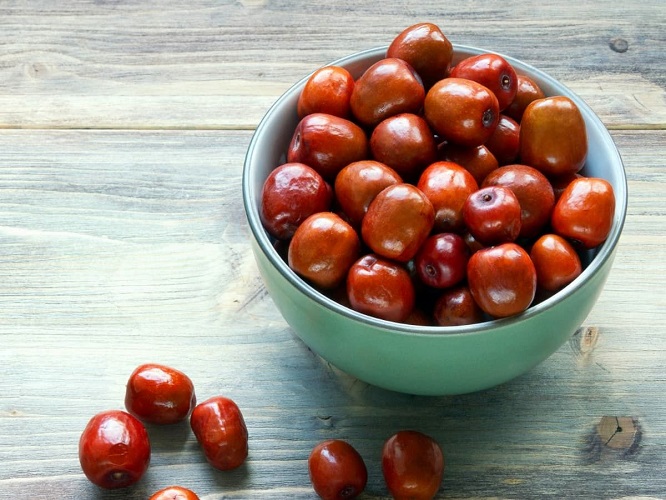
What Causes Jujube Fruit to Crack?
Jujube fruit crack is a common issue that can significantly affect its quality and market appeal. Understanding the reasons behind this cracking can help growers manage the problem effectively and improve the quality of their harvest.
Here are the main reasons why jujube fruit may crack:
- Sudden Temperature Changes: Rapid shifts in temperature can stress the fruit and lead to cracking.
- Improper Watering: Either too much or too little water can cause issues that result in cracked fruit.
- Nutritional Deficiencies: Insufficient nutrients in the soil can weaken the fruit, making it more prone to cracking.
- High Humidity: Excess moisture in the air can create conditions that contribute to fruit splitting.
- Pests and Diseases: Infestations or infections can weaken the fruit, increasing the likelihood of cracks.
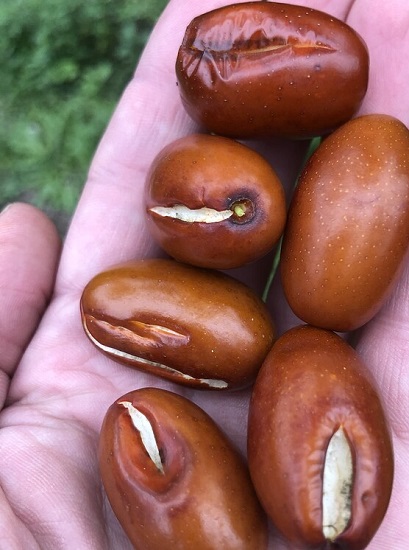
How to Control Cracking in Jujube Fruit
To prevent jujube fruit from cracking, there are several steps you can take across different areas. Let’s look at some effective strategies to manage this issue:
Proper Watering
Watering is crucial in growing jujube trees and directly affects the quality and health of the fruit. Incorrect watering can lead to problems, including fruit cracking.
If jujube trees don’t receive enough water, the fruits experience drought stress. In these conditions, the trees try to conserve water, which can lead to uneven growth and eventually cause the fruit to crack.
On the other hand, overwatering can also have negative effects. When trees receive too much water, their roots can struggle to get enough oxygen. This can weaken the fruit’s structure, making it more prone to cracking. Excessive watering can also create waterlogged soil, which is harmful to the roots.
To avoid these issues, it’s important to water regularly. If you water weekly, make sure to stick to that schedule. If the tree goes too long without water and then suddenly receives a lot, there’s a greater chance of the fruit cracking. Monitoring soil moisture can help prevent drought stress, which in turn helps keep the fruit intact.
Additionally, using drip irrigation systems is recommended. These systems provide water evenly and efficiently, helping to avoid sudden stress on the plants. By following these watering practices, you can effectively reduce the risk of cracking in jujube fruit.
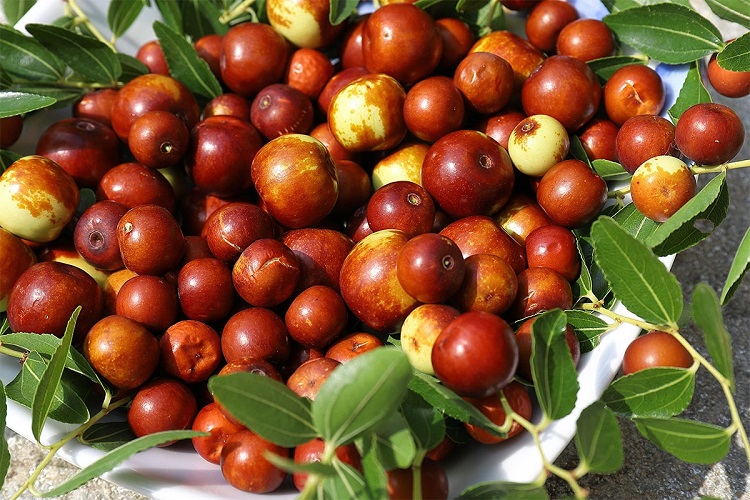
Proper Nutrition: Key to Preventing Cracking in Jujube Fruit
Proper nutrition for jujube trees plays a crucial role in the quality and health of the fruit. A lack of essential nutrients or an imbalance can lead to cracking in jujube fruit. Here are some key nutrients that significantly impact the quality of jujube fruit:
- Potassium: Potassium helps regulate the osmotic pressure in cells. A deficiency in potassium can weaken the cell walls, increasing the likelihood of fruit cracking. Using potassium-rich fertilizers can strengthen these cell walls.
- Calcium: Calcium is essential for the strength of the fruit’s cell walls. A lack of calcium can make the skin of the fruit soft and fragile, making it more prone to cracking. Calcium helps prevent the fruit’s tissue from softening. Applying calcium-containing fertilizers, like calcium nitrate, can improve the strength of the fruit’s skin.
- Magnesium: Magnesium is important for metabolic processes and improving fruit quality. A deficiency in magnesium can hinder the growth and development of the fruit. Providing magnesium through suitable fertilizers can enhance the quality of the fruit.
- Micronutrients: Insufficient levels of micronutrients such as zinc and iron can lead to overall plant weakness and damage to the fruit. Using compost or fertilizers containing these micronutrients can benefit the overall health of the plants and their fruits.
These fertilizers should be applied during the fruit-growing season at the appropriate dosage. To determine the right amount, it’s essential to understand the needs of both the soil and the trees. Conducting a soil test will help identify the existing nutrients and minerals in the soil. By supplying the necessary nutrients we discussed, you can significantly reduce the risk of cracking in jujube fruit.
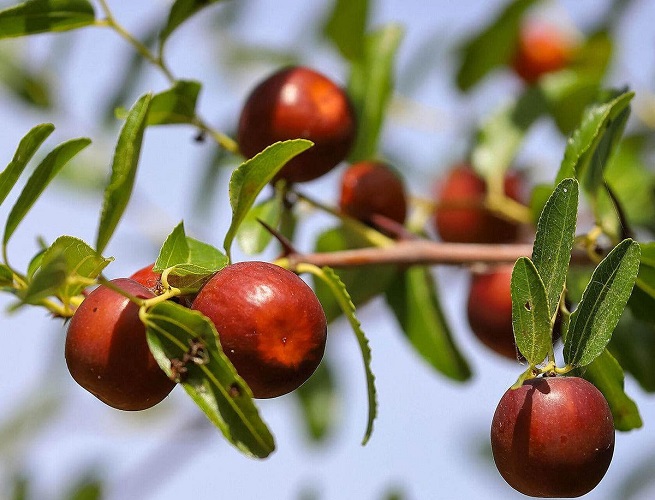
One key tip for preventing jujube fruit from cracking is to stop using nitrogen fertilizers during the later stages of fruit growth. As you may know, nitrogen is an essential nutrient for plants and trees, primarily responsible for promoting leaf and stem growth. It’s best to apply nitrogen fertilizers during the early growth stages up until flowering. However, during the fruit development and ripening phases, you should cease using nitrogen fertilizers like ammonium sulfate fertilizer.
If you’re unsure about the best timing for applying fertilizers, it’s a good idea to consult with an experienced farmer or an agricultural expert. Using fertilizers at the right time can improve the yield and quality of your fruit while helping to avoid potential issues.
Controlling Temperature and Humidity
When temperatures suddenly rise, fruits absorb water quickly, which creates internal pressure and can lead to cracking. In high temperatures, jujube fruit grows rapidly, but its texture can’t keep up with this fast growth, resulting in cracks. On the other hand, low temperatures can negatively affect jujube fruit as well. Cold weather slows down the metabolic activity in the trees, preventing the fruits from reaching their final stage of ripening. This can cause the fruits to crack when they do eventually ripen.
To avoid temperature-related problems, it’s best to plant only those fruits that thrive in your specific geographic area. Native fruits are better adapted to the local climate and tend to grow more successfully. Additionally, in hot weather, using shade covers can help reduce temperatures and prevent rapid water evaporation.
It’s advisable not to plant jujube trees in coastal areas or places with high humidity, as jujube trees do not thrive in damp conditions. To manage humidity levels, mulching is recommended. Mulching helps maintain consistent soil moisture and prevents sudden fluctuations. Planting trees at proper distances ensures that all trees receive enough sunlight and avoids shading. Regular pruning is also suggested to allow light to reach different parts of the tree.
Controlling Pests and Diseases
Pests and diseases can weaken the skin of jujube fruit, making it more likely to crack. To prevent this, it’s important to regularly check your trees for any signs of pests or diseases so you can identify and address them early. If needed, use approved and appropriate pesticides to control these issues.
Choosing Resistant Varieties
Some local varieties of jujube are naturally more resistant to cracking. These varieties tend to be better adapted to the climate and soil conditions of the area. It’s important to select varieties that match your local climate. Sudden temperature changes, especially during the fruit’s growth stage, can lead to cracking, so choosing jujube varieties that are more resilient can help reduce these problems.